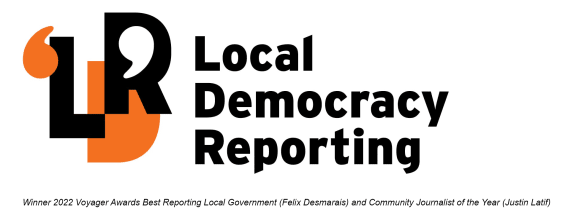
The Poverty Bay flats, an area of intensified crop production, was recently discussed by councillors during deliberations on water supply. Photo: Gisborne Herald / Liam Clayton
A swathe of challenges face the Tai Rāwhiti freshwater supply including climate change, scarcity and wastage.
That is according to a recently released Gisborne District Council report which has painted a sobering picture of issues in the region.
The water management report laid out findings as it sought direction from elected members on the council's role in the non-municipal supply going forward.
Although the region had been facing the issue of "too much water" due to severe weather, it was projected severe drought and water scarcity was the next problem, the report said.
"Economic and social implications will be felt across the region with increased water insecurity.
"It is uncertain whether demand reduction measures alone will be enough to secure the region's freshwater security."

The report's findings included a September assessment by consultancy Aqualinc to determine where pressure was most likely to be felt, and what that would look like.
Although the council played a key role in water management, its role in the development of new water supplies was less clear.
As such, it was seeking direction from elected members as to what avenue the chief executive should go down with the region's non-municipal supply.
"Management of water is tricky and is a challenge being faced nationally," the council report read.
"It is acknowledged widely (from multiple reports and modelling exercise) that without meaningful intervention, both the quality and quantity of the region's waterbodies subject to the most intensive demand, will face further decline."
The three options put to councillors included consolidating and potentially expanding existing water demand management, enabling the development of storage options, and committing to the development of storage options.
Several councillors spoke strongly in favour of the latter at a council meeting last week.

Gisborne district councillors discussed the region's fragile water situation at a recent meeting. Photo: Gisborne Herald / Liam Clayton
Councillor Tony Robinson said he wanted to see more water available to the Poverty Bay flats, an area of intensified crop production.
He also pushed for the use of treated wastewater for irrigation in the area.
"There is so much potential. If we don't take a lead on this, we'll be twiddling our thumbs, in three and six years time still wondering whatever happened."
Councillor Rob Telfer said there was a consensus in recent workshops that water was the number one priority.
"This is a golden opportunity," he said.
Others felt option three was aspirational, but not suitable given the current climate.
"I'm feeling very conservative in light of our community going through recovery" deputy mayor Josh Wharehinga said.
Ultimately, it was decided that the topic should be workshopped further before the council could take a stance.
In 2021, the council presented a report showing current water management was based on a historic perspective that the resource was a commodity with an endless supply.
Because of that mindset, there had been little work in reducing demand or addressing wastage.
The September 2023 report undertaken by Aqualinc found an annual volume of 33 million cubic metres of water was consented for abstraction.
About 90 percent of that was surface water, which was in a state of decline in areas where it was used most intensively.
The annual volume required for irrigation could increase by up to 15 percent by 2050, Aqualinc found.
Local Democracy Reporting is Public Interest Journalism funded through NZ On Air







